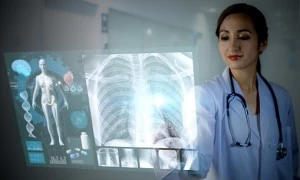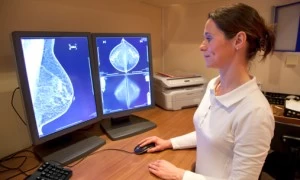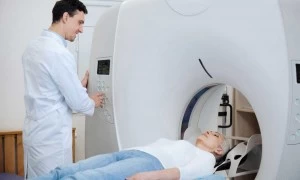Procedure Prep - MRI Arthrogram
Is there any preparation on my part prior to my appointment?
If your previous imaging was not done at one of our locations, you may be asked to contact your former provider and request that your film be sent to us for a comparison study.
How should I prepare for my exam?
MRI uses a strong magnetic field and radio waves to make detailed pictures; please review our MRI metal safety checklist.
Specific instructions will be given while scheduling your appointment. You may have restrictions on eating/drinking prior to your exam or may have to hold certain medications like blood thinners (anticoagulants).
- If you have an active infection and are taking antibiotics, the medication course must be complete prior to the procedure, to ensure that no infection remains.
- Wear comfortable clothes without metal fasteners, including zippers, buttons and snaps.
- Arrive 15 minutes early to complete registration.
Bring with you:
- Your appointment form
- Insurance information, including your insurance card
- Valid photo ID
Please let us know about any of the following:
- Pregnancy, known or possibe
- Allergies to medications, iodine or x-ray contrast
- Metal in your body (pacemaker, hearing aid, etc.)
Please let us know if you have an insulin pump or glucose monitor. Our imaging machines may cause your device to malfunction, so it will need to be removed during your exam.
How long will my exam take?
An arthrogram is a two-part procedure. The first part - the injection - typically takes 30 minutes, and then another 30-45 minutes for an MRI scan.
What happens during my exam?
First part - injection
The first part of an arthrogram uses fluoroscopy – a specialized type of x-ray equipment that images the area in real time, and displays it on a video monitor. You will lie on your stomach or back, depending on the area to be injected.
The fluoroscopy camera will be positioned above you. The area to be injected will be cleansed with an antiseptic solution.
Local anesthetic will be applied to numb the area. A small needle will be placed in the joint and contrast material (i.e. x-ray dye) will be injected into the joint space. Some patients feel a slight pressure sensation or discomfort as the contrast is injected.
Several x-ray images will be taken using the fluoroscopy machine. Pain medications like anesthetic and/or steroids may also be injected, depending on what was ordered by the healthcare provider. The injection portion typically takes about 30 minutes.
Second part - MRI
In most cases, an MRI (or occasionally a CT scan) of the joint will be performed after the injection portion. CT can be used to better evaluate the intra-articular structures in patients who cannot have an MRI for safety reasons. The MRI will take another 30-45 minutes.
Can’t I just have an MRI? Why do I need to have an injection first?
- An MRI arthrogram can be used to further evaluate an abnormality identified on a routine MRI.
- MRI arthrogram can better define some issues following surgery than a routine MRI.
- Distention of the joint from the injected contrast material can better highlight some small structures that are close together on a routine MRI.
- Determining if an injury extends outside the joint can be easier with MRI arthrogram in some cases.
What happens after my exam?
A summary of the procedure and the findings will be sent to your healthcare provider.
Unless directed otherwise, you may resume your normal diet and prescribed medications. Rest for the remainder of the day and avoid heavy lifting and strenuous activities.
You may experience some soreness at the injection site for up to 24 hours; an ice pack placed on the affected area may help to relieve this.
As with any procedure involving a needle, there is a small chance of infection or bleeding. Rarely there could be neural injury, headache, temporary numbness, weakness or facial flushing.














































































